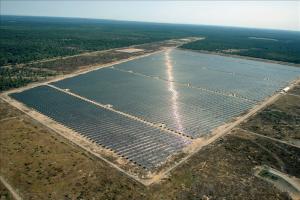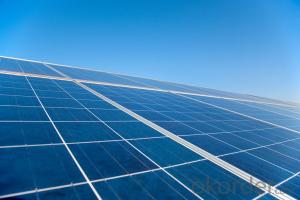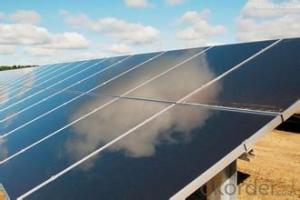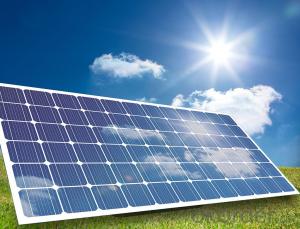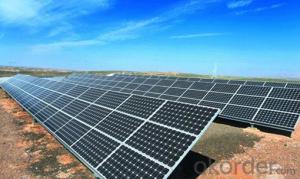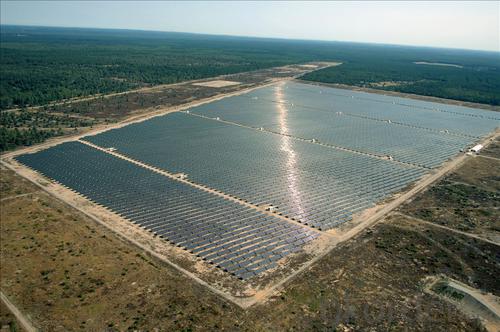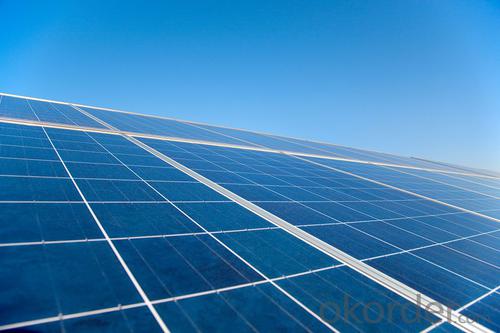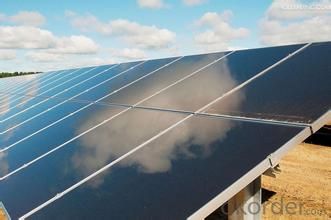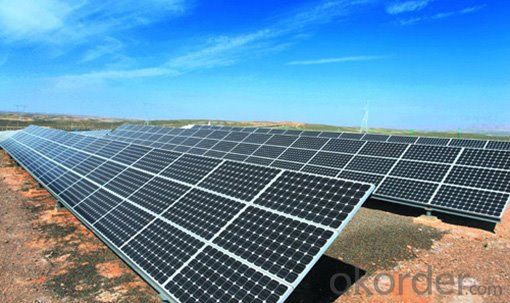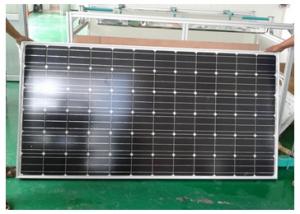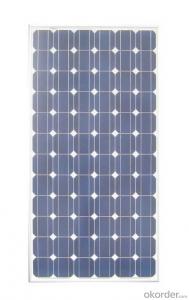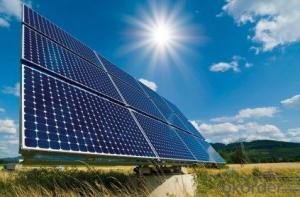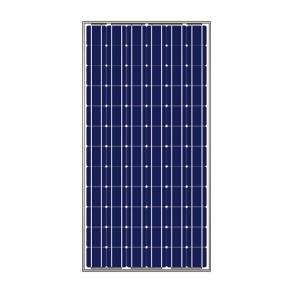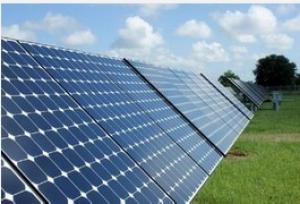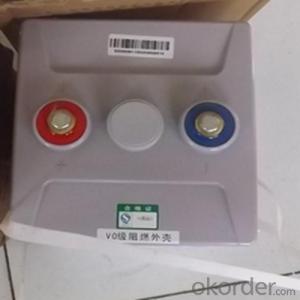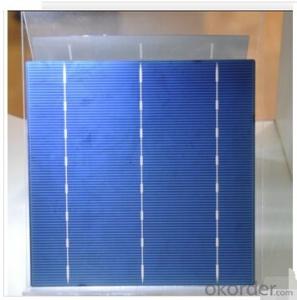FS-M180-72 Six Junction Solar Cells Home Use Mono Solar Module 180W
- Loading Port:
- Shanghai
- Payment Terms:
- TT OR LC
- Min Order Qty:
- 11 watt
- Supply Capability:
- 111111 watt/month
OKorder Service Pledge
OKorder Financial Service
You Might Also Like
1.Structure of Solar Module Description
The solar module is an off-gird solar power generator, designed to provide stable and reliable electricity to homes and communities without access to grid electricity or to those regions where are short of power or even without power. The solar module is convenient to move, easy to set-up with reliable performance, making it ideal for situations where emergency power is required. It is an ideal & reliable energy source for a wide variety of applications, ranging from lighting , radios, fans ,televisions ,computers ,refrigerator. The USB port is compatible with all 5V-USB charged devices. It can also act as a back-up power source during emergency situations.
2.Main Features of the Solar Module
1).High conversion efficiencies resulting in superior power output performance.
2).Outstanding power output even in low light or high temperature conditions
3).Optimized design for ease of soldering and lamination
4).Long-term stability,reliability and performance
3.Solar Module Images
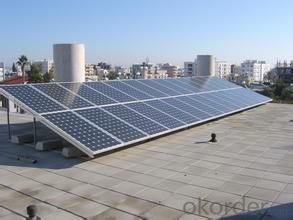
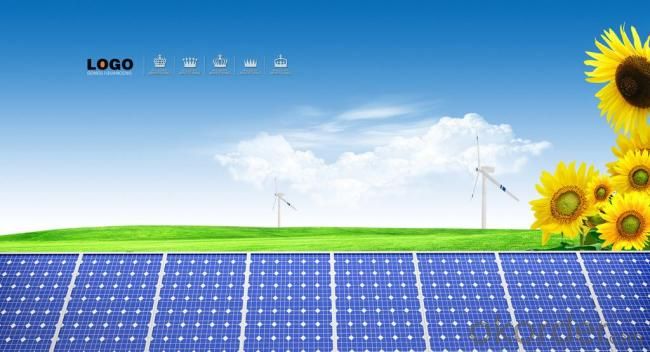
4.Solar Module Specification
Material: molycrystalline silicon
Maximum power: 180W
Cell type: molycrystalline silicon 125mm*125mm
Size: 1580*808*35mm
Number of cells: 72 pieces
Voltage: 1,000V DC
| Maximum power voltage(Vmp) | 36.00V |
| Maximum power current(Imp) | 5.00A |
Open circuit voltage(Voc) | 44.80V |
| Short circut current(Isc) | 5.29A |
| Operating temperature | 44.4±2Co |
Temp.Coeff.of Isc(TK Isc) | 0.06%/ C |
| Temp.Coeff.of Voc(TK Voc) | 0.397%/ C |
| Temp.Coeff.of Pmax(TK Pmax) | 0.549%/ C |
| Weight | 14.5KG |
5.FAQ of Solar Module
1). Q: Are you a factory or trading company?
A: We are a factory.
2). Q: Where is your factory located? How can I visit there?
A: Our factory is located in Jiangyin, Jiangsu, China, near Shanghai. You are warmly welcomed to visit us!
3). Q: How can I get some samples?
A: Please connect me for samples
4). Q: Can the price be cheaper?
A: Of course, you will be offered a good discount for big amount.
- Q: Can solar cells be used in electric bikes or scooters?
- Yes, solar cells can be used in electric bikes or scooters. They can be integrated into the design of these vehicles to harness solar energy and supplement their charging systems. This enables them to recharge the battery and extend their overall range, making them more energy-efficient and sustainable transportation options.
- Q: Can solar cells be used in cloudy or rainy weather?
- Yes, solar cells can still be used in cloudy or rainy weather, although their efficiency will be reduced. While solar cells generate less electricity under such conditions due to reduced sunlight intensity, they can still produce some power. Additionally, advancements in solar technology have improved the ability of solar cells to capture diffused and indirect sunlight, making them more viable in less optimal weather conditions.
- Q: Doping and Diffusion Principle in Solar Cell Processing
- In the solar silicon, the impurity atoms of the gas source close to the silicon, after heating, so that the gradual diffusion of impurities will slowly penetrate the silicon wafer, the concentration from the edge of the silicon to the inside is gradually reduced.
- Q: How do solar cells perform in regions with high levels of humidity and rainfall?
- Solar cells generally perform well in regions with high levels of humidity and rainfall. While moisture in the air can reduce the efficiency of solar cells to some extent, modern solar panels are designed to withstand these conditions. Additionally, rain can actually help clean the panels, removing dust and dirt that may accumulate over time. Overall, solar cells can still generate a significant amount of electricity in regions with high humidity and rainfall.
- Q: What is Solar Cell Technology?
- It changes our life.
- Q: How do solar cells perform in areas with high levels of insect activity?
- Solar cells can still perform well in areas with high levels of insect activity. However, the efficiency of solar cells might be slightly affected if there is a significant accumulation of dust, debris, or insect droppings on the surface of the panels. Regular cleaning and maintenance can help mitigate any potential impact and ensure optimal performance.
- Q: How do solar cells perform in extreme temperatures?
- Solar cells can be affected by extreme temperatures, both hot and cold. High temperatures can decrease the efficiency of solar cells and reduce their power output, while very low temperatures can also impact their performance. However, modern solar cell technologies have been developed to minimize these effects and ensure better performance even in extreme temperatures.
- Q: How do solar cells perform in areas with high levels of air pollution and dust?
- Solar cells perform less efficiently in areas with high levels of air pollution and dust. The particles in the air and dust settle on the surface of the solar cells, reducing their ability to absorb sunlight and convert it into electricity. This buildup of dirt can significantly decrease the overall performance and output of the solar panels. Regular cleaning and maintenance are crucial in such areas to ensure optimal functioning of the solar cells.
- Q: What are the disadvantages of using solar cells?
- One disadvantage of using solar cells is their high initial cost. The installation and purchasing of solar panels can be expensive for homeowners or businesses, making it less accessible for some people. Additionally, solar energy production is dependent on weather conditions, meaning that cloudy or rainy days can lead to reduced efficiency. Finally, the production of solar cells requires rare materials, such as silicon, which can have negative environmental impacts if not managed properly.
- Q: Are solar cells safe for the environment?
- Yes, solar cells are safe for the environment. They generate electricity using sunlight, which is a clean and renewable energy source. Solar cells do not emit any greenhouse gases or pollutants during operation, making them an environmentally friendly energy solution. Additionally, they have a long lifespan and can be recycled, reducing their overall impact on the environment.
Send your message to us
FS-M180-72 Six Junction Solar Cells Home Use Mono Solar Module 180W
- Loading Port:
- Shanghai
- Payment Terms:
- TT OR LC
- Min Order Qty:
- 11 watt
- Supply Capability:
- 111111 watt/month
OKorder Service Pledge
OKorder Financial Service
Similar products
Hot products
Hot Searches
Related keywords
